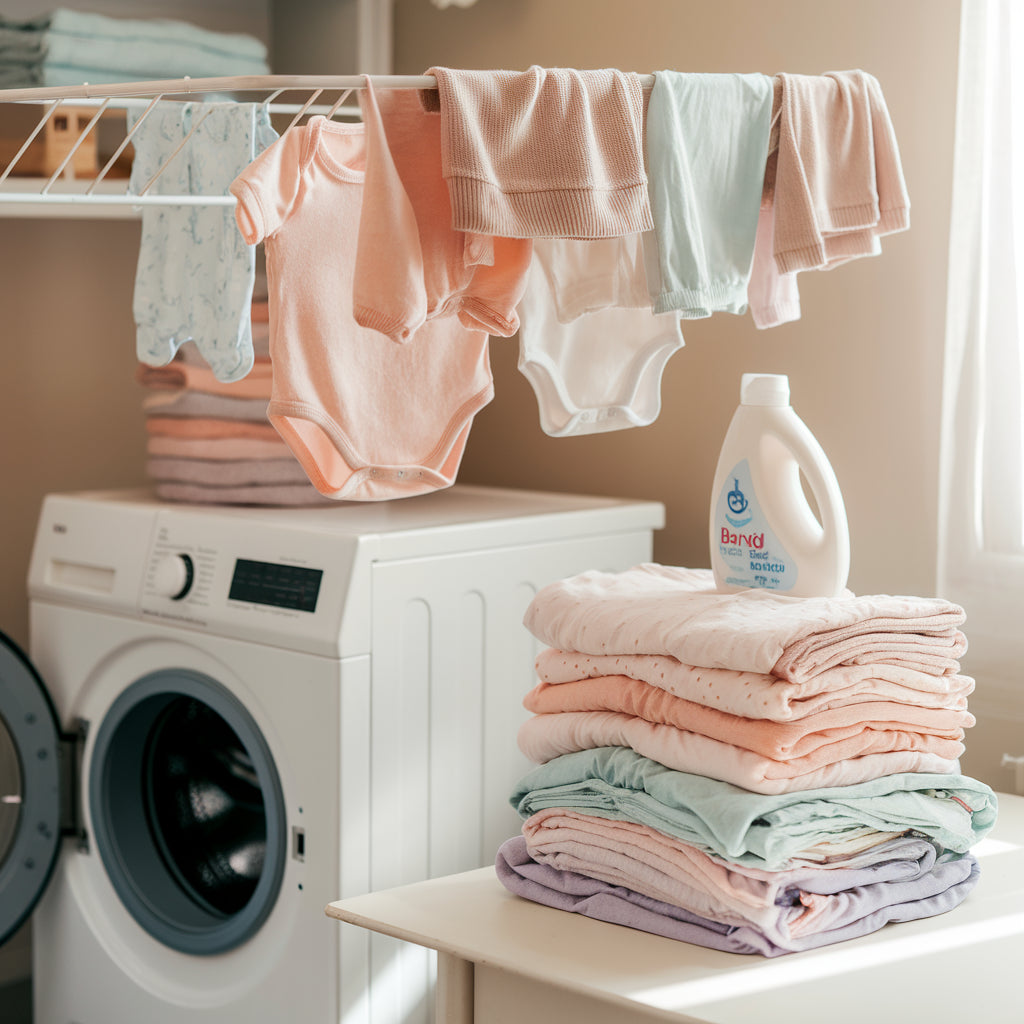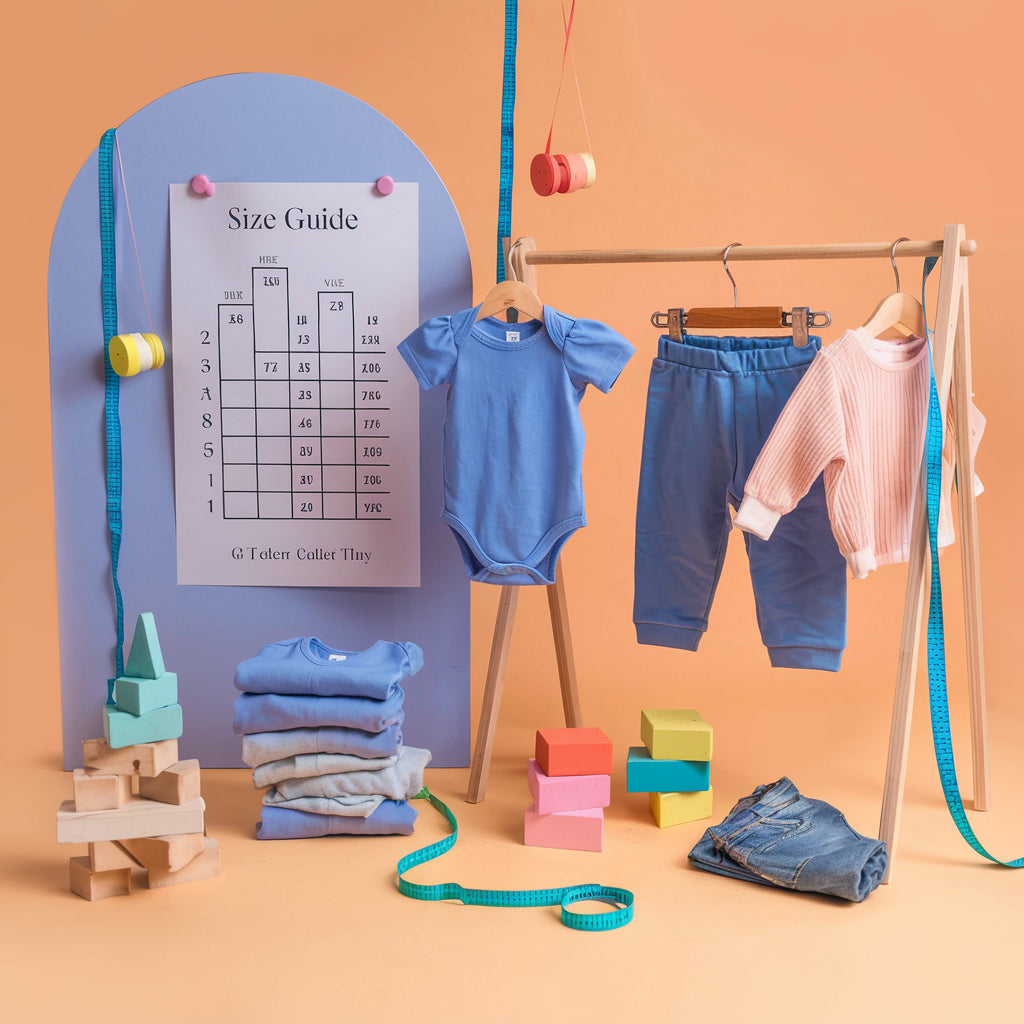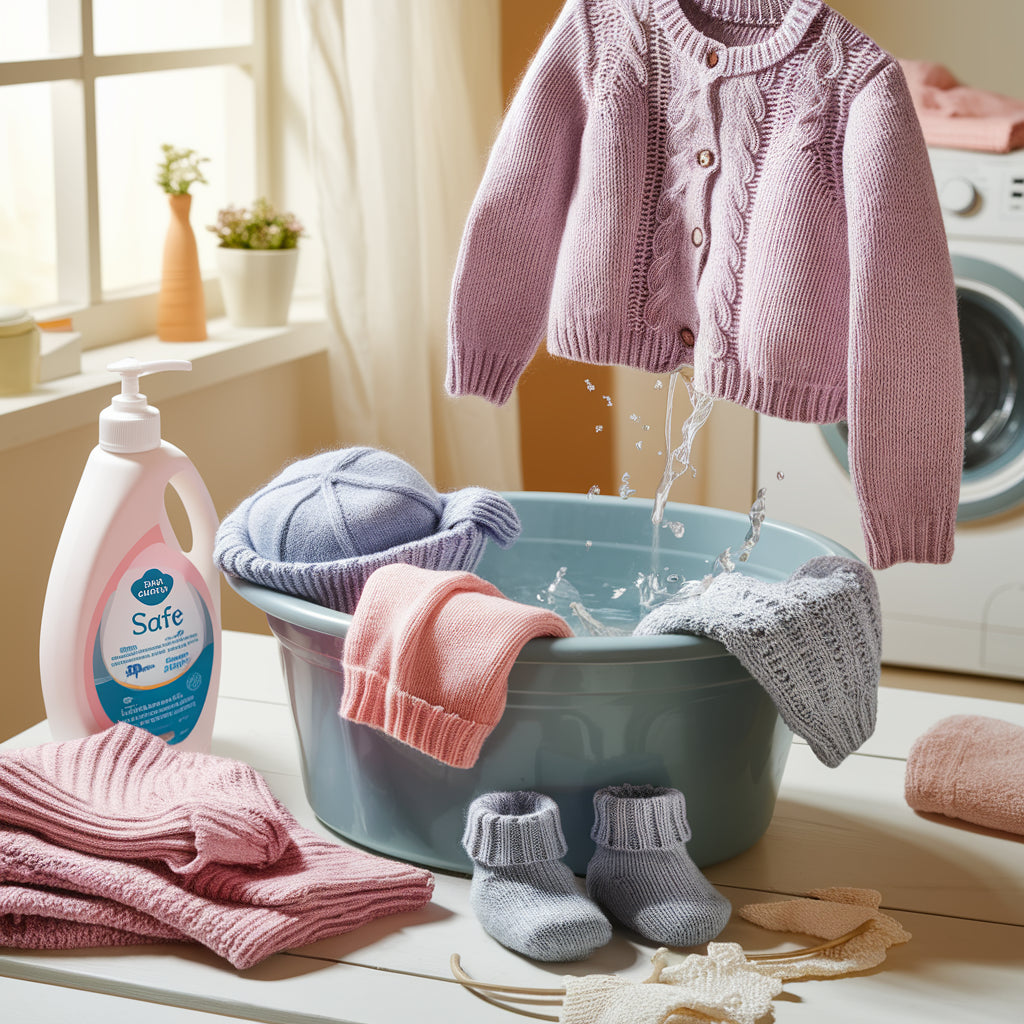
How to Wash Baby Clothes: The Ultimate Guide for New Parents
Washing your baby’s clothes may seem like a simple task, but it’s crucial to do it right to protect your little one’s sensitive skin. Babies are vulnerable to rashes, allergies, and skin irritations caused by harsh detergents and improper washing methods. To keep your baby comfortable and safe, you’ll want to learn how to wash baby clothes in the safest and most effective way possible. In this guide, Tiliankids.com offers expert advice on how to make sure your baby's clothes stay soft, clean, and irritation-free.
Why Properly Washing Baby Clothes is Essential
Babies have delicate, sensitive skin that requires extra care. Their immune systems are still developing, and their skin can react to even the mildest irritants. That’s why it’s important to use special techniques when washing baby clothes, such as using hypoallergenic detergents and avoiding fabric softeners that may cause irritation.
Clothing also often comes into contact with drool, milk, spit-up, and diaper leaks, making frequent washing a necessity. However, frequent washing in hot water or with harsh chemicals can weaken fabric fibers, causing clothes to wear out more quickly. Understanding how to wash baby clothes properly will not only ensure they stay clean and fresh but also keep them soft and durable for longer.
Choosing the Right Detergent for Baby Clothes
The first step in learning how to wash baby clothes is selecting the right detergent. Not all detergents are created equal, and some contain fragrances, dyes, and chemicals that can irritate your baby’s skin. It’s best to look for detergents labeled as hypoallergenic, fragrance-free, or specifically designed for babies.
What to Avoid in Baby Detergents:
- Strong fragrances or perfumes
- Dyes and artificial colors
- Harsh chemicals like bleach or sulfates
Instead, opt for natural or organic detergents. Brands that are free of harmful chemicals are gentler on your baby’s skin while still being effective at removing stains and odors.
For more information on choosing the best baby-safe detergent, visit Tiliankids.com.
How to Wash Baby Clothes for the First Time
Before your baby wears any new clothes, you’ll need to wash them. Even though the clothes may appear clean, they could contain residues from the manufacturing process or be contaminated from handling during shipping and in stores.
Here are the steps for washing baby clothes for the first time:
- Step 1: Sort by color and fabric. Just like with adult clothes, baby clothes should be sorted by color to prevent dyes from bleeding onto lighter fabrics.
- Step 2: Use cold or lukewarm water. Hot water can weaken fabric fibers over time, so opt for cooler temperatures to keep clothes in good condition.
- Step 3: Use a baby-safe detergent. Measure the detergent according to the load size, and avoid using too much, as excess soap can irritate sensitive skin.
- Step 4: Rinse clothes twice. If your washing machine has an extra rinse cycle, use it to make sure all detergent is thoroughly washed out of the fabric.
- Step 5: Dry on a low-heat setting. High heat can damage delicate baby fabrics like cotton and wool, so it’s best to tumble dry on low or air dry.
These steps are simple but effective in ensuring your baby’s clothes are fresh, clean, and safe to wear. For additional washing tips, head to Tiliankids.com.
Dealing with Stubborn Stains
Babies are messy, and you’ll inevitably encounter stains from food, milk, or diaper leaks. Here’s how to tackle common baby-related stains effectively:
1. Milk or Formula Stains:
Soak the stained garment in cold water as soon as possible, then wash using a baby-safe detergent. For stubborn stains, a small amount of baking soda or white vinegar added to the wash can help lift the stain.
2. Food Stains:
Pretreat the area with a gentle stain remover, or rub a small amount of detergent directly onto the stain. Let it sit for a few minutes before washing.
3. Diaper Leaks:
For poop stains, scrape off any excess and rinse the area with cold water. Use a gentle stain remover or natural alternative like baking soda, and wash immediately.
For more detailed stain-removal techniques, check out our comprehensive guide at Tiliankids.com.
How to Sanitize Baby Clothes Safely
It’s not always necessary to sanitize baby clothes, but there are times when you may want to, such as after an illness. Here are safe ways to sanitize without using harmful chemicals:
- Vinegar Rinse: Adding a cup of white vinegar to the rinse cycle can help kill germs and freshen clothes.
- Sunlight: Drying clothes outside in the sun is a natural way to sanitize and whiten baby clothes without bleach.
Make sure to avoid harsh disinfectants like bleach, as they can be irritating and damaging to baby’s skin.
For more sanitizing tips, visit Tiliankids.com.
How Often Should You Wash Baby Clothes?
Babies go through several clothing changes a day, and their clothes quickly accumulate stains and odors. It’s a good idea to wash baby clothes after each wear, especially if they are visibly soiled or smell of milk or spit-up.
However, items like jackets or outerwear can be worn multiple times before washing unless they become dirty. Always wash anything that has been in contact with bodily fluids or food, and ensure that sleepwear is washed frequently to maintain cleanliness during naps and overnight.
Tips for Drying and Storing Baby Clothes
After washing, baby clothes should be dried using a gentle method to preserve their softness and prevent shrinking. Air drying is ideal for most baby clothes, especially items like swaddles or delicate fabrics. If you use a dryer, choose the lowest heat setting to avoid damage to the fabric.
Once dry, baby clothes should be stored in a clean, dry place. It’s a good idea to fold or hang them neatly, separating everyday items from special outfits for easier access. If you’re storing clothes for future use, make sure they’re in airtight containers to prevent dust and mildew.
How to Wash Baby Clothes
When washing baby clothes, always prioritize your baby’s comfort and safety. By using gentle detergents and proper washing techniques, you can keep your baby’s clothes clean and soft, while avoiding irritants that can cause skin problems. Visit Tiliankids.com for more tips and product recommendations for baby laundry care.
FAQs
How should I wash baby clothes made of delicate fabrics like wool?
Is it necessary to wash new baby clothes before they are worn?
Can I use fabric softener on baby clothes?
What temperature is best for washing baby clothes?
How do I get tough stains out of baby clothes?
How often should baby blankets and swaddles be washed?
Conclusion
Washing baby clothes doesn’t have to be complicated, but it does require extra care and attention to detail. By following the advice in this guide, you can make sure your baby’s clothes are clean, soft, and free of harmful chemicals or irritants. For more expert advice and product suggestions, be sure to visit Tiliankids.com, where you’ll find everything you need for caring for your baby’s wardrobe.



